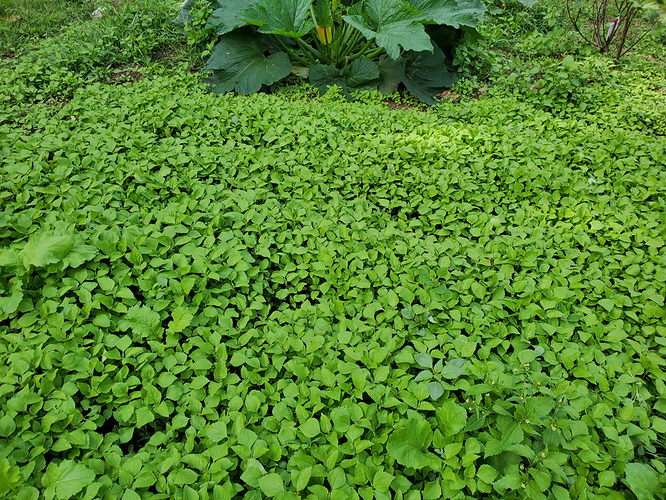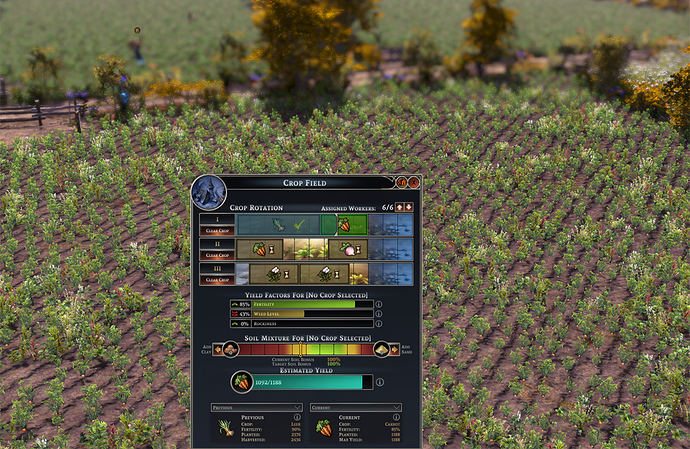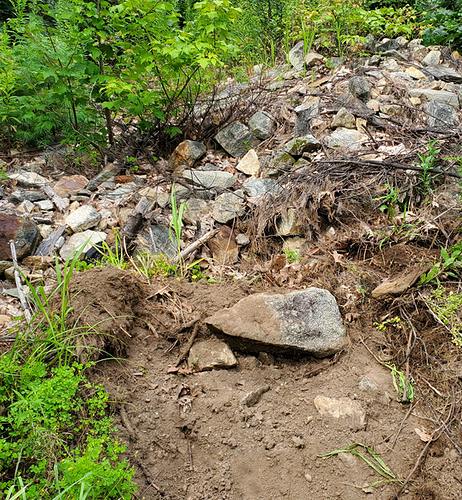Weeds are one of the main challenges I’ve struggled with in growing my own crops and so, I felt like I had to find a way to represent this in the game. I’ve never had as much trouble with them in other places I’ve lived and I think it is because the previous owners of this property let the garden go for years and it had turned into a field choked with weeds. In that time, millions of seeds must have been produced and fallen to the ground, lurking there as scions of evil, waiting for the day someone would again attempt a garden.
The spring following the year I cleared out the garden, I tilled the soil and planted rows of seeds. A few weeks late, I had what I would consider 100% “weed level” 
Yes, all those tiny plants are virtually all weeds. You can barely make out the turnips I planted. I think this is because the soil is just loaded with seeds all waiting their chance to grow. Likewise, in Farthest Frontier, when you first create a crop field, it will start with a very high weed level, representing the potential for weeds to grow based on how saturated the soil is with accumulated years of seeds from the wild plants that had grown there before. So weed level is not just the state of weeds growing but also the potential for the field to grow weeds based on seed accumulation.
When your field has a high weed level, it will reduce the yield of the crops you plant. Part of the progression of Farthest Frontier is working on your fields over successive years to gradually get them into optimal growing condition, so that they produce higher yields.
Weed level can be reduced in two ways - the most immediate is “field work” which requires villagers to just spend time weeding the field. This reduces the weed level but, of course, as I know all too well, new weeds will soon appear to replace the old. So it takes successive rounds of weed control to gradually reduce weed level. Here I’ve performed “field work” on the above plot of ground.
The other way to deal with weeds, is to grow what’s called a “cover crop” which is a fast growing crop that can out-compete weeds and which can be harvested or just tilled into the soil. In Farthest Frontier, clover acts as a cover crop, both raising fertility (more on that later) and helping to reduce weeds. Different crops have more or less ability to compete against weeds. Carrots, for example, do almost nothing to inhibit weed growth and can be quickly overwhelmed if you don’t keep weeding around them. On the other hand, buckwheat is a very fast growing crop that smothers weeds. In Farthest Frontier, it is a great option for when you want to control weeds but also produce a bit of grain food.
Here is a bit of buckwheat I tried growing as an experiment the other other - as you can see, not much room for weeds to grow:
Here you can see a field in Farthest Frontier that is currently growing carrots and is at 47% weed level. Notice various clumps of weeds starting to grow up among the carrots:
















